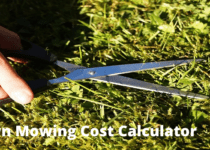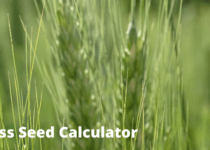Vegetable Yield Calculator
Here’s how to use a vegetable yield calculator, like the one we created in the previous example:
1. Gather Information:
- Garden Layout: Determine the number of rows you plan to plant and the length of each row in feet.
- Plant Spacing: Check the recommended spacing for the specific vegetable you’re planting (usually found on seed packets or online resources). Measure this spacing in inches.
- Expected Yield: Seed packets or gardening guides often provide an estimated yield per plant. Note whether this yield is in pounds, ounces, or another unit.
2. Enter the Values:
- Number of Rows: Input the total number of rows you have in your garden bed.
- Row Length: Enter the length of each row in feet.
- Plant Spacing: Input the spacing between plants in inches.
- Expected Yield: Enter the estimated yield per plant, making sure the unit (pounds, ounces, etc.) matches the calculator’s input field.
3. Calculate:
- Click the “Calculate Yield” button.
4. Interpret Results:
- Total Plants: The calculator will display the estimated total number of plants you can fit in your garden based on the layout and spacing.
- Estimated Yield: This value represents the total projected harvest for all plants, based on the expected yield per plant.
Example:
Let’s say you’re planting tomatoes:
- Garden Layout: 4 rows, each 10 feet long.
- Plant Spacing: 18 inches apart.
- Expected Yield: 5 pounds of tomatoes per plant.
- Enter the values: 4 rows, 10 feet row length, 18 inches spacing, 5 pounds expected yield.
- Click “Calculate Yield.”
- Results: The calculator might show approximately 133 plants and an estimated yield of 665 pounds of tomatoes.
Important Considerations:
- Estimates: The calculator provides estimates. Actual yields can vary depending on factors like weather, soil conditions, pests, and plant care.
- Spacing: Proper spacing is crucial for plant health and yield. Overcrowding can lead to disease and reduced production.
- Yield Variations: Expected yield is an average. Some plants may produce more or less than the estimate.
- Succession Planting: For continuous harvests, consider staggering planting times or using succession planting techniques.



